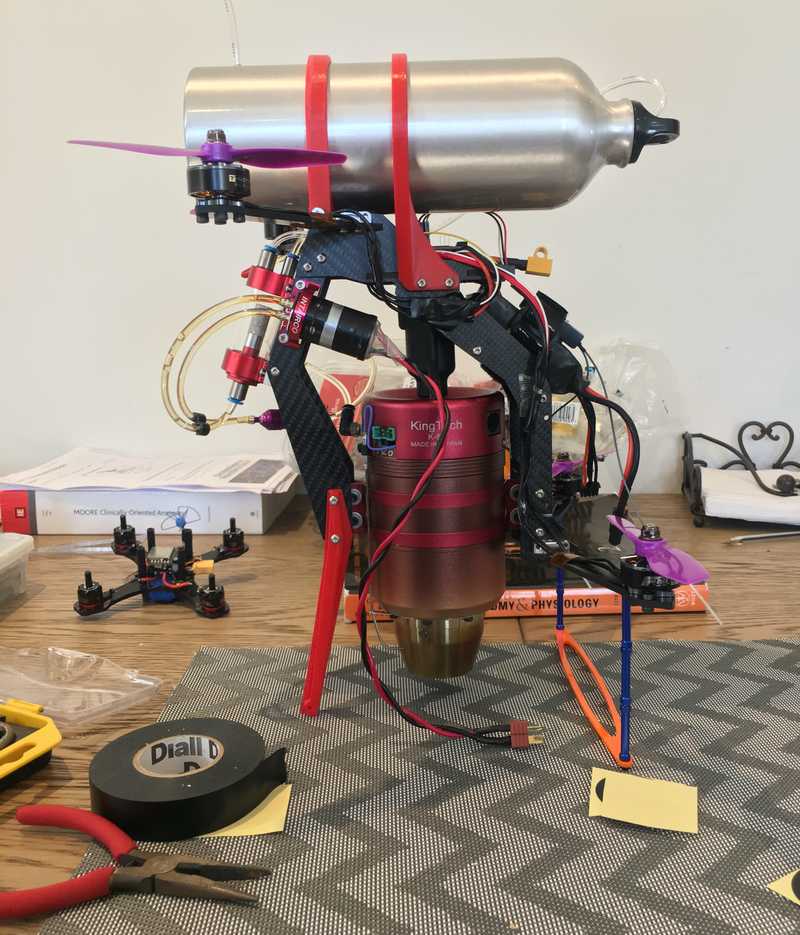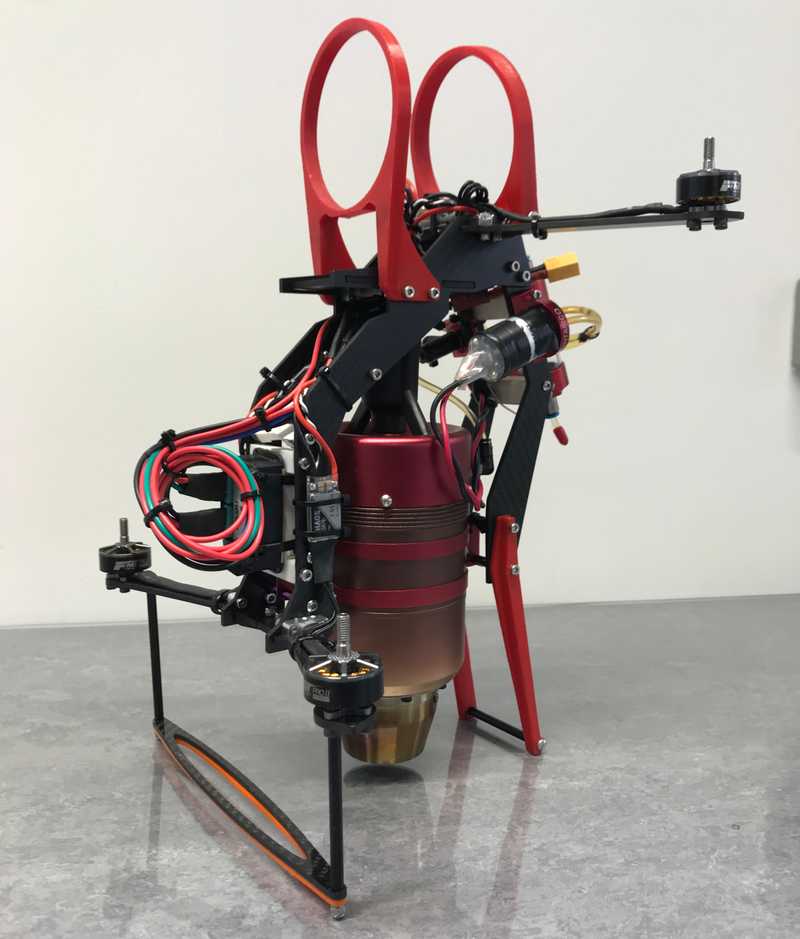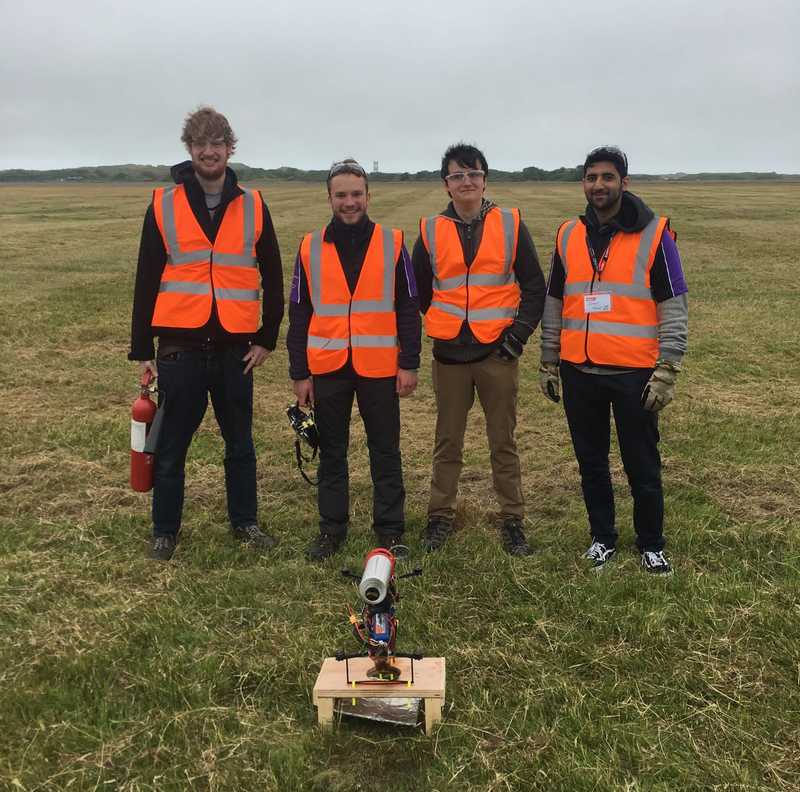The Inception of the JetQuad
You haven't seen, or heard, anything like it. Ismail from Volve explains how it came to be.
Written
10 min read
The Need
In the event of an environmental or man made catastrophe, electricity is usually the first source of energy to go, this is especially true in countries where much of the electrical infrastructure is above ground, lending itself to be easily damaged in the case of most natural disasters. At the same time, there is a huge push in using drones to accelerate the response time to these disasters, in inspecting the region, finding victims and delivering medical aid and food. However, almost all commercially available drone systems use batteries to power them, the one resource that is most likely to be not available. So when we were tasked with developing a drone system for natural disasters, we knew we had to find an alternative energy source.
Unfortunately this meant coming back to fossil fuels, although this is not the direction we would have liked to go due to its environmental impact, it was the only energy source that is readily available. Therefore, we needed a system that could burn a variety of fuels to provide energy for the system and the perfect answer to that came in the form of a micro jet engine. These stunning pieces of engineering have the capability of producing huge amounts of thrust for their size and weight and can run on a variety of heavy fuels from Jet A1 to Diesel. Therefore running a system like this meant you could scavenge fuel from abandoned trucks and cars or syphon some from aircraft entering and leaving the area. The micro jet engine also meant that we could make our system significantly more compact compared to other systems that lift similar payloads.
Then came the problem of how to actually design a system to make use of this jet engine. And more importantly how to make a system with a jet engine actually be capable of landing and taking off vertically. Which when talking to those that had been on the field was a key feature they would like to see. As often the infrastructure to launch and recover aerial systems is heavy and difficult to transport to a disaster region.
The Design
So we began exploring a number of different concepts, analysing their stability, range, size and usability. Normally combustion driven drones use the IC engine as a generator and then use the electricity generated to run normal electric motors. The approach we selected differs in the way we separate the usage of each system. In our approach we use the jet engine as the main source of thrust, but siphon a small amount of the total thrust to run an alternator to power electric motors whose job is to not provide the main lifting thrust, but to actually stabilise the system. In this way we reduce losses through the system as there is very little loss in the energy conversion process as the thrust is mainly being used directly. It also keeps the system very compact as the motors can be smaller and therefore the required alternator and motor control electronics follow suit.
After many months of designing, prototyping and building we were ready for the first test flight. What we had ended up creating was a system that weighed 1.2kg and had approximately 15kg of thrust, quite a startling statistic made even more alarming after doing some simple calculations. To save you the trouble of figuring out what this means, on a simple vertical climb this system was capable of accelerating at 11.5G or 252mph/s. Which if air resistance didn’t exist would mean the system would be travelling at the speed of sound in just under 3 seconds. And now I had to somehow tame the monster we had built with the two sticks on my controller.
Tentatively we placed it down on our launch stand, a simple wooden thing with a whole cut out to allow for the exhaust gasses from the engine to not be in direct contact with the ground. For the first flight I had separated the control of the engine from the stabilisation system, the thinking behind this is that we would spool the engine up to the point where it is just about to take off and then use the stabilisation system to provide just enough thrust to get it into the air. This meant we had two controllers one controlling the stabilisation system and the other for just the engine thrust. I had given control over the engine to my colleague, who had never heard or more aptly “experienced” what a jet engine sounds like outside the confines of a noise isolated engine dyno bay (maybe a slight oversight on my part).

So then we went to start the engine, the starter motor fired up and the fuel pump started whirring but the slight pop heard when the engine initially ignites was absent. We tried again a few more times but the same problem occurred. The engine wouldn’t start, what was happening is that the starter injectors are positioned so that fuel is sprayed onto the igniters when the engine is horizontal. However, with our system the engine was placed vertically meaning fuel was not spraying on the igniters and the engine would not start, a problem we decided we would solve another day. But currently we had to get this thing into the air, so our quick solution to this was to hold the system horizontally, wait on engine ignition and the stage 1 ramp before placing it back on to the stand. In the moment this was quite an alarming stunt, seeing a few feet worth of yellow flames coming down to a concentrated blue cone of ‘fury’ while the engine ramps to its idle speed of 40,000RPM, all with it being a few inches away from your hand and body, definitely gets your heart racing.
Watch the first flight here, turn on your sound.
Once the engine has gone through this start procedure and is idling the control unit switches control from itself over to the operator. Once we got the green light I then armed the electric stabilisation system with a flick of a switch, it spooled into life immediately (admittedly a much easier process than starting a jet engine). It was now the moment to find out whether the months of calculations, stability analysis, control system programming, design and manufacture were correct. For me it is these moments I live for as an engineer, seeing something you have worked on tirelessly actually come to fruition. Anyway we slowly brought up the throttle on the engine to something around 60-70,000RPM enough to just get it off the ground and I began to bring up the throttle on the stabilisation system, making micro corrections to fight the engine alongside the control system. Unfortunately on that first flight the system was just about to get into the air but one of the legs caught the launch stand and that caused it to tip over. I had programmed an emergency kill switch on the controller which I promptly hit switching off the stabilisation system and engine fuel pump that killed the jet engine. Not the first flight we had hoped for, but on analysing the footage it was clear that the control system was working somewhat, it just required some tuning and that we were on the right track. We followed this up with a few more flights but again the system was just not stable enough to keep itself in the air. It felt like trying to balance a ball on your head, just momentarily stable before falling off.
The Competition
Now this drone had been designed for the 2018 Unmanned Aerial Systems challenge, an annual event run by the Institution of Mechanical Engineers to challenge teams to design a disaster response drone. Unfortunately after many trial flights we had not achieved the stability required to fly at the competition and although we went to the competition we were only allowed to start the engine for a demo. Nevertheless the team won the most promise award and it generated a huge amount of discussion regarding the future of unmanned aerial systems in the disaster response area.

However, once back from the competition we began to analyse the data we had collected, trying to nail down where the problem was. From our mathematical modelling we had determined a system of this nature should be theoretically stable, it was just a matter of figuring out where currently the system did not match our model. And eventually we found it, on the system there are two throttle curves that are mixed to provide the total thrust, one from the electric stabilisation side and the other for the jet engine. It was in this mix that lay the problem, essentially the stabilisation system is required to work within the minimum and maximum set by the current required thrust and the programmed throttle response at that value. At values below 30% thrust the electric stabilisation system did not have enough authority to fight the gyroscopic precession forces produced by the engine. This meant the system was inherently unstable in a hover, where only 8% of total thrust is required.
Once we corrected this throttle response/control issue, we fired up the system again and were finally able to see everything we had worked towards come into life. The system took off with the same tendency of tipping to one side. However, this time the control system fought back and brought it back to level flight. We were now hovering a jet engine with a few small electric motors, a feat we knew was theoretically possible from our calculations but were not entirely sure we could pull off in real life. Our crazy idea had gone from just that, an idea to an actual reality.
The Possibilities
During this time we realised that we had not only created a new type of drone, but that we had also stumbled on a new novel way to allow us to optimise systems in general. Without this optimisation technique a feat of this nature would not have been possible and would have required numerous hardware changes to get a first flight not just a simple software change.
What if we could apply this to other systems we wondered? Engineering in general would be much quicker, easier and less painful and we would be far more likely to get to the solution on our first try. It was this seed that has eventually led to the founding of our company Volve, which is on a mission to help engineers use algorithms we originally developed on the jet drone to solve the worlds hardest problems.
